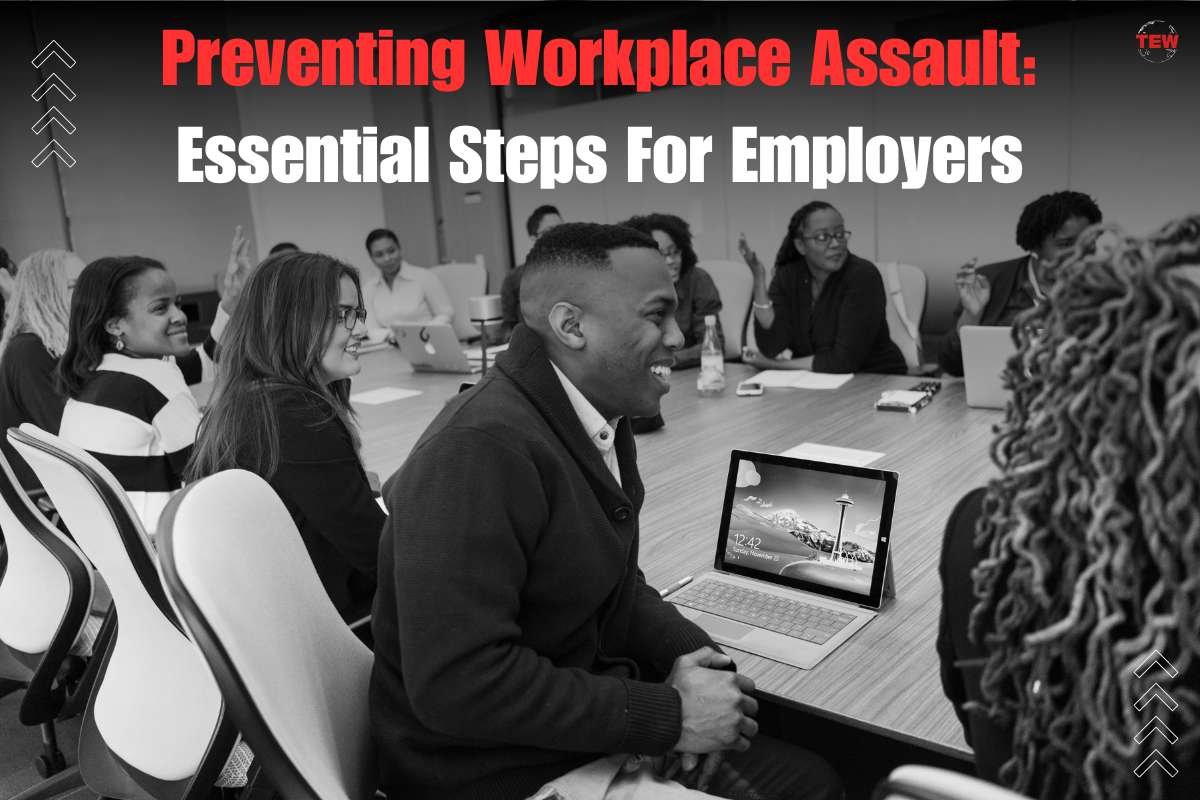Workplace safety is paramount for any thriving business. To ensure the continued well-being and productivity of the workforce, employers must take steps to prevent assaults in the workplace. With the right strategies, proactive planning, and ongoing employee education, it’s possible to cultivate a safe, respectful, and violence-free work environment.
Here’s essential steps for employers to preventing workplace assault;
1. Establish Clear Policies
Employers need to formulate explicit policies that tackle all aspects of workplace violence. This extends from verbal threats right through to physical aggression. It’s vital to communicate that any type of assault offences have no place within the organization.

These policies should underline the potential consequences of violent behavior, ensuring everyone in the company understands them. The penalties must be fair and consistently applied, creating an environment where everyone feels protected. Implementing such policies allows the workplace to maintain a culture of respect and safety, holding every member accountable for their actions.
2. Create A Reporting System
A crucial step toward preventing workplace assault involves setting up a confidential reporting system. Such a system provides a secure channel for employees to share their concerns or report any unsettling incidents. Ensuring the confidentiality of these reports can foster trust, encouraging employees to share their experiences.
The essence of this system is to create a secure environment where employees feel at ease reporting incidents, knowing there won’t be any backlash. This is especially important when employees might be fighting a false protection order, as they need assurance that their side of the story will be heard without prejudice. By encouraging early reporting, employers can intercept potential threats before they escalate, further enhancing workplace safety and mutual respect.
3. Provide Regular Training
Offering regular training sessions is a critical component in the effort to prevent workplace assault. These educational opportunities equip employees with the necessary knowledge to spot potential threats, helping to maintain a secure environment. They also offer insights on effective methods to de-escalate volatile situations, thereby promoting peace within the workplace.
Furthermore, these training programs serve to educate employees about the appropriate response in the event they witness or encounter violence. This knowledge is critical to preventing situations from escalating and ensuring swift, effective action is taken to address any incidents that may arise.
4. Promote Open Communication
Fostering open communication is critical to maintaining a respectful, nonviolent work environment. By encouraging employees to share their concerns, thoughts, or challenges freely, a platform for mutual understanding and empathy is created. This practice strengthens team members’ relationships and mitigates misunderstandings that might lead to conflict.

By encouraging dialogue, any tensions can be diffused early on, thereby preventing situations that could escalate into violence. The cultivation of open communication within the workplace thus plays a significant role in preventing assault and fostering a safe, inclusive environment.
5. Implement Strict Anti-Harassment Policies
Adopting and enforcing rigorous anti-harassment policies is a significant step in the fight against workplace assault. These policies should be viewed as complementary to those against workplace violence, forming a comprehensive approach to ensuring a safe, supportive environment.
Strict enforcement of these policies creates a workspace that’s physically secure, as well as emotionally and mentally supportive. It sets the standard for acceptable behavior, ensuring everyone feels respected and valued. Thus, these policies contribute significantly to preventing workplace assault, fostering an environment of mutual respect and safety.
6. Conduct Thorough Background Checks
Carrying out comprehensive background checks plays a critical role in pre-emptively addressing issues that could lead to workplace violence. These checks provide a glimpse into the history of potential hires, allowing employers to assess risk factors such as past violent behavior.
While it’s essential to believe in the capacity for change, a history of violent actions can serve as a significant predictor of future behavior. Thus, these thorough checks act as an essential tool in preventing workplace assault, aiding in selecting a workforce that contributes positively to the safety and well-being of all employees.

7. Monitor Workplace Environment
Keeping a watchful eye on workplace dynamics is a proactive measure to spot unusual or potentially threatening behavior early on. Regular observations and monitoring can reveal any changes in behavior or relationships that may indicate a potential issue..
This preventive approach helps to avert incidents before they occur, thereby protecting employees from potential assault. By remaining vigilant and aware, employers can nip potential issues in the bud, contributing significantly to workplace violence prevention.
8. Ensure Adequate Security
In the quest to prevent workplace assault, supplying sufficient security measures is a crucial step. Implementing these security measures ensures the physical safety of your employees, creating a protected and secure environment.
This could involve the installation of surveillance cameras, employing security personnel, or implementing controlled access to the premises. By taking these steps, employers can mitigate potential risks and provide employees with a sense of safety, further fortifying their efforts for preventing workplace assault.
Conclusion
Preventing workplace assault is a multi-faceted endeavor. It requires clear policies, confidential reporting systems, regular training, open communication, strict anti-harassment policies, thorough background checks, active monitoring of the workplace environment, and adequate security. By addressing these areas, employers can create a safe, respectful, and violence-free workplace.




